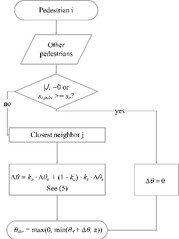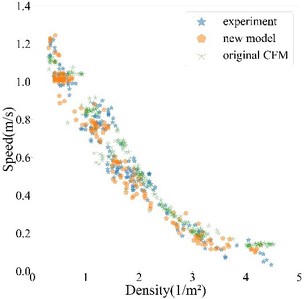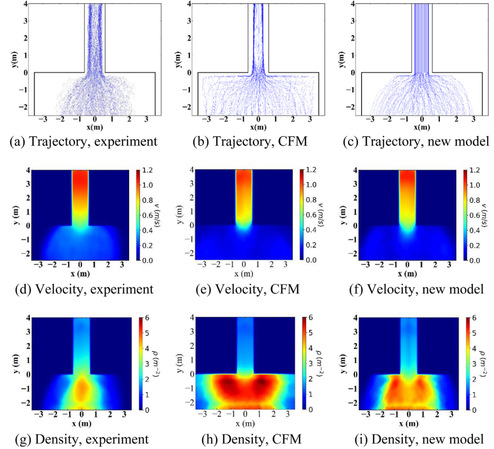A Speed-based Model for Crowd Simulation Considering Walking Preferences


Problem & Motivation
To improve the safety of large scale activities, a variety of pedestrian models have been proposed to uncover the machanism of individual bahaviors and interactions among pedestrians and obstacles. However, pedestrians in the these models are often viewed as mutually exclusive particles. In fact, the movement of pedestrians can be affected by many other factors like their perception of comfort and perference for walking straight to the intended destinations, which are often overlooked in the modelling.
The collision-free speed model realizes collision avoidance solely depending on the minimum headway distance. Despite of its simplicity, it can reproduce many self-organization phenomena with higher efficiency. We developed a new microscopic model by integrating walking preferences of pedestrians into the collision-free speed model.
Methods
In the model, the walking direction is determined by taking human perception of comfort and preference for walking straight to their intended destination into account. The restriction of walls in the heading direction on pedestrian’s walking is introduced to avoid potential collisions among pedestrians and obstacles. Model validation with respect to experimental data in corridor and bottleneck scenatios shows that our model performs better than the original model.
Corridor with periodic boundaries

Bottleneck


Related Publication
Zhang, S., Zhang, J., Chraibi, M., Song, W., 2020. A Speed-based Model for Crowd Simulation Considering Walking Preferences, Communications in Nonlinear Science and Numerical Simulation, 105624.
Download: [Paper]

